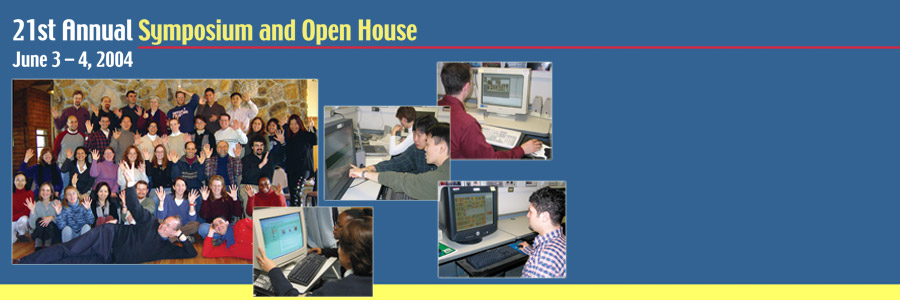
 |
|
Pre-Symposium Tutorials & Workshops—June 3, 2004 A.V. Williams Building Registration begins at 9:30am in the lobby of AV Williams. The tutorials/workshop will run from 10:00am - 4:00pm. Lunch will be provided. |
| TUTORIALS |
| Introduction to Human-Computer Interaction Jonathan Lazar Contact jlazar@towson.edu for more information |
| Human-Computer Interaction is an inter-disciplinary field with historic roots in computer science. Other fields that contribute to Human-Computer Interaction include psychology, sociology, library science, education, and industrial engineering. With this broad base of knowledge, we can gain a better understanding of what humans need from their computer interfaces, to successfully compete work-related tasks, to communicate with others, to learn, to create, to explore, and for all of this to take place with maximum satisfaction and minimum frustration. In this tutorial, we will summarize the design, development, and evaluation of computer user interfaces, to meet the needs of real users. The goal of this tutorial is to provide a broad introduction to Human-Computer Interaction, and specific information on how to understand users, their tasks, and their environments, with the goal of using that information to help build better user interfaces. This tutorial is suitable for people with no background in design or HCI. The following is a preliminary outline for the day: • Introduction to some general questions and thoughts (what does the area of HCI include? are all parts important to all developers?) • Understanding users and getting to know their tasks (not every user is the same, but how different are they? how do we determine tasks? do all users have the same tasks? how do we get to know how the users perform tasks?) • Designing with the user (there are several levels at which we can involve the user—which to use? when? why?) • Designing visual interfaces (how to make something interesting yet still usable) • Evaluating interfaces (what are some guidelines that are used? how can this be done rapidly? at a low cost?) There will be two or three hands-on exercises to help us explore these topics. Handouts will also be provided. |
| An Introduction to Usability Testing Bill Killam Contact bkillam@user-centereddesign.com for more information This is an introductory tutorial on the topic of usability testing so we will be discussing what usability testing is (and isn’t), what makes a product usable, the origins of usability testing, the relationship of usability testing to the broader area of Human Factors Engineering. We will also discuss the different protocols that can be used for performing a usability test (both user-based and non-user-based) and what data can be obtained using the different protocols. We will discuss the timing of usability testing, how to plan for them in the design and development process, and what ROI there is for usability testing. Finally, we’ll be discussing the steps required for conducting a usability test—planning a test, determining the test tasks, test length, participant selection and recruiting, and data collection. Finally, we will be discussing testing with special populations such as accessibility testing, testing with older populations, testing with kids. The audience for this tutorial is usually a mixture of practitioners (designers, content writers, information architects, etc.), novice usability practitioners looking to expand their skills, and management staff that may be considering incorporating more formal usability into their organization. |
| WORKSHOP |
| Personal Medical Devices: Increasing Patient Healthcare Participation Ben Shneiderman Contact ben@cs.umd.edu for more information Please send a note describing your interest in the topic and a title of a talk, if you are interested in presenting. See http://www.cs.umd.edu/hcil/about/events/open-house-2004/ws_meddevice.htm
for more information about this workshop. |